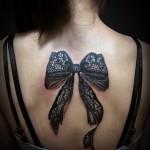In the realm of ink and skin, Egyptian god tattoos stand as a testament to the timelessness of ancient mythologies. These symbols, etched into flesh, are more than mere decoration; they are powerful amulets, carrying the weight and wisdom of an ancient civilization. The fusion of this age-old symbolism with the art of modern tattooing creates a connection that transcends time, a bridge between the past and present.
Historical Context
To truly appreciate the depth of Egyptian god tattoos, one must journey back to the dawning days of civilization along the Nile River. Ancient Egypt was a land steeped in religious lore, where gods and goddesses reigned supreme over every aspect of existence. The pantheon was vast, with each deity commanding realms from the underworld to the vault of the sky.
Hieroglyphs, the sacred script of the Egyptians, often depicted these deities. They were more than mere characters; they were potent symbols, evoking the divine power of the gods they represented. For the ancients, these symbols were alive, charged with the essence of the gods themselves.
Common Egyptian God or Goddess for Tattoos
The pantheon of Egyptian gods is rich and varied, offering a diverse tattoo ideas for the divine personalities. Each idea is perfect for expressing different facets of the human experience.
Egyptian God Ra Tattoo- The Radiant Sun God
Ra, the hawk-headed sun god, is a symbol of creation and the life-giving power of the sun. A tattoo of Ra often signifies a new beginning, a rebirth, or the nurturing of a creative spark. Picture the god’s eye, encircled by rays of light, etched into the skin—a perpetual reminder of the wearer’s inner light and potential for growth.
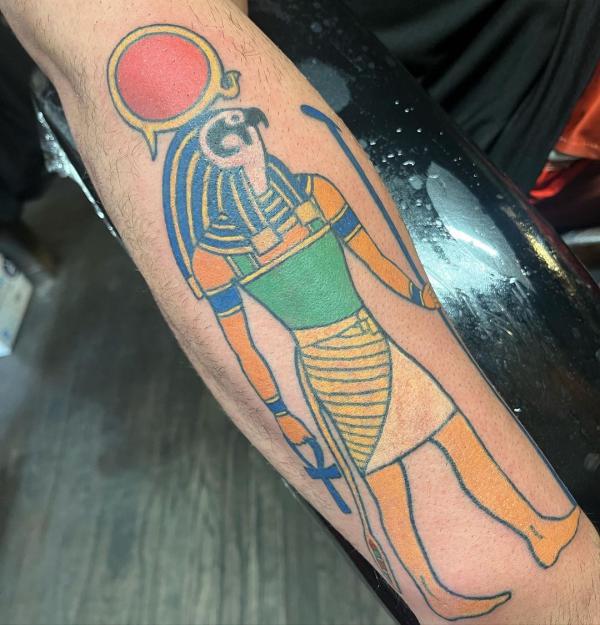
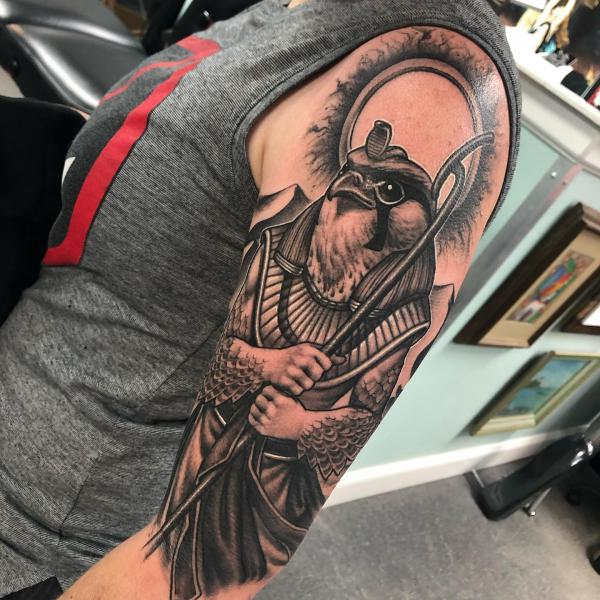
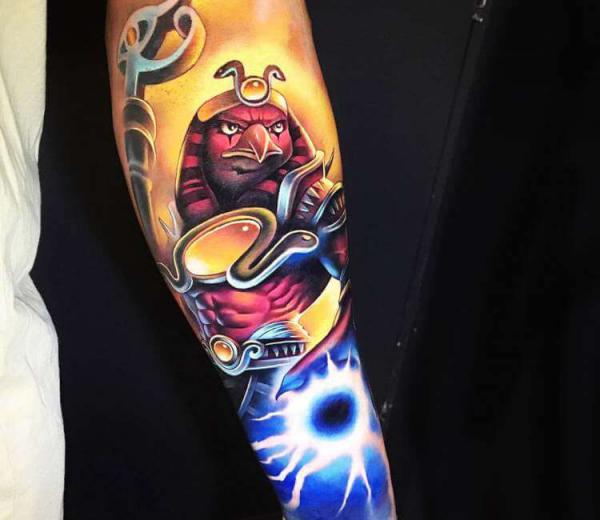
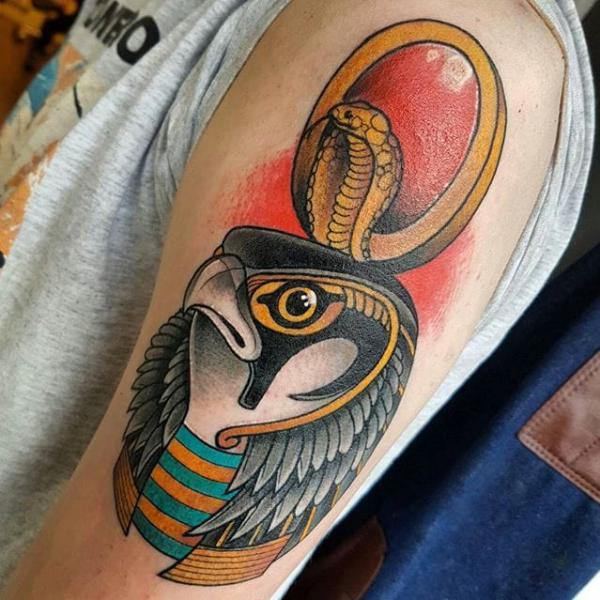
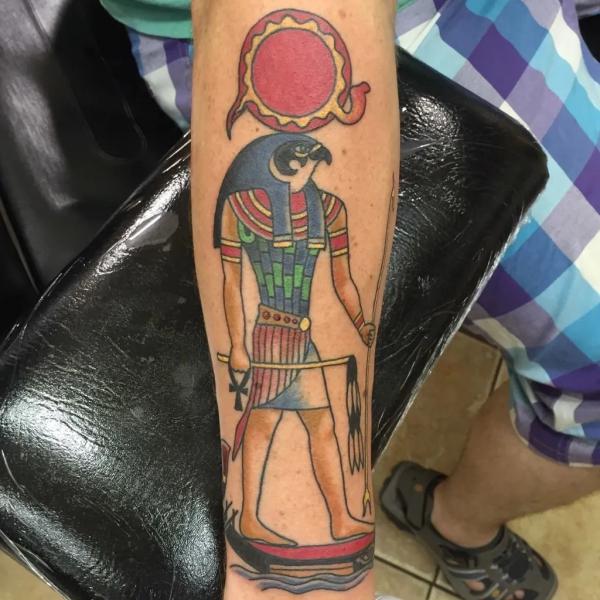
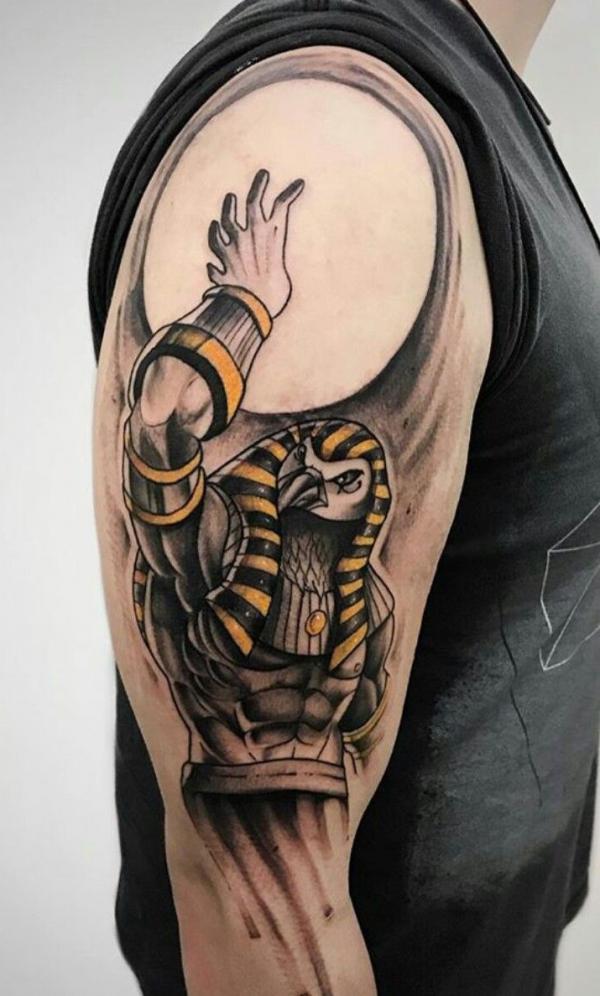
Egyptian God Osiris Tattoo – The Lord of the Afterlife
Osiris, often depicted with green skin symbolizing rebirth, is the god of the afterlife and resurrection. Choosing Osiris for a tattoo can express a belief in life after death, a respect for the cycles of nature, or an enduring connection to a lost loved one. His image serves as a talisman against despair, a symbol of hope for what lies beyond.
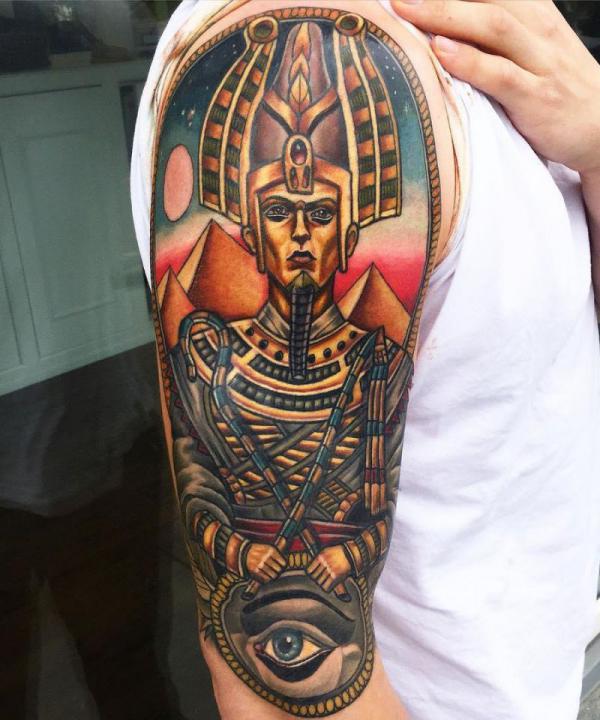
Egyptian Goddess Isis Tattoo – The Enchanting Protector
Isis, the winged goddess of magic, is the embodiment of the protective mother and wife. Tattoos of Isis can represent feminine strength, the power of healing, and the magic of love. Those who wear her image believe in the power of nurturing and the bonds that tie families and loved ones together.
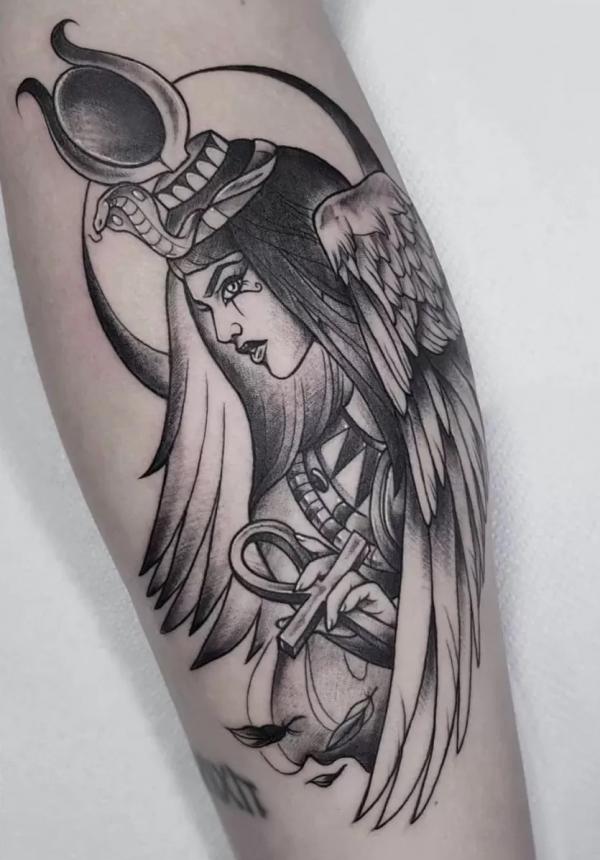
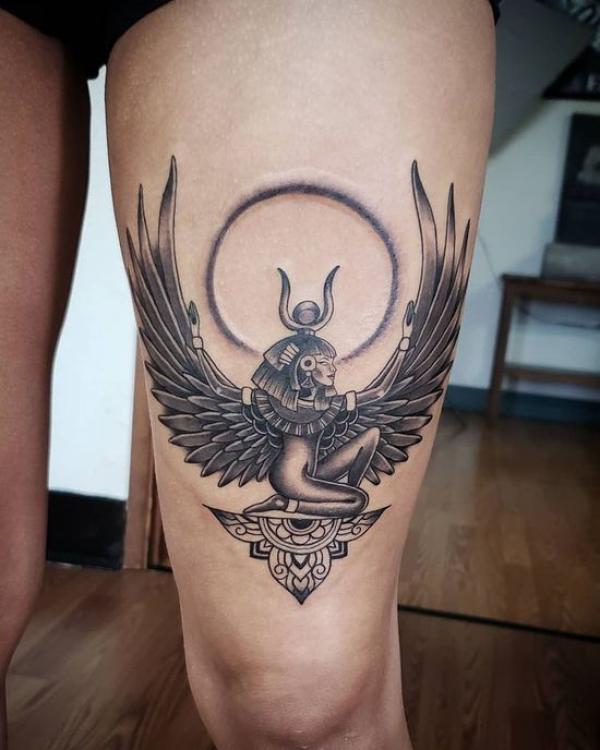
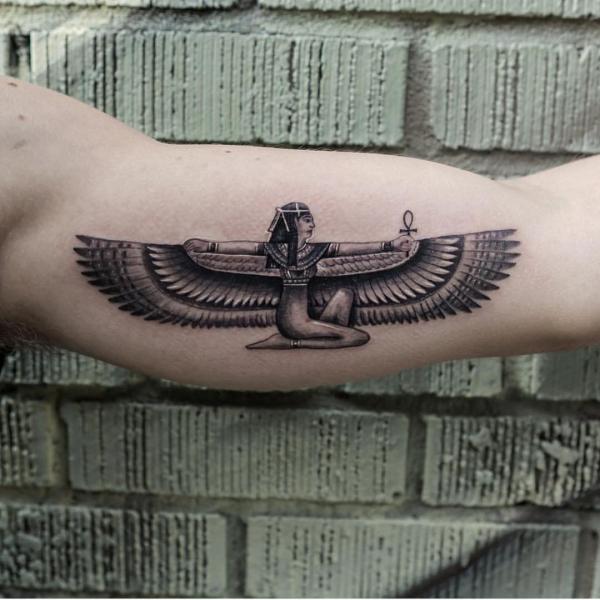
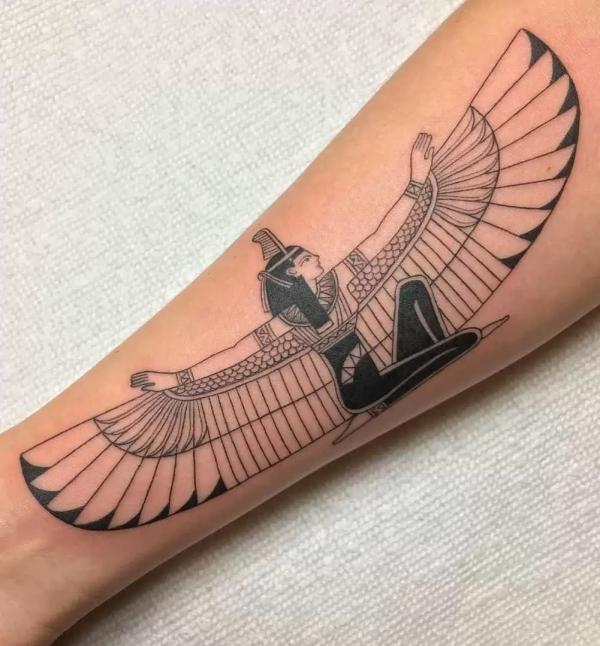
Egyptian God Horus Tattoo – The Vigilant Sky God
Horus, with his falcon head and piercing eyes, is the god of the sky and the protector of the pharaoh. His image, especially the Eye of Horus, is a symbol of protection, royal power, and good health. In tattoo form, Horus serves as a watchful guardian, an emblem of courage and authority.
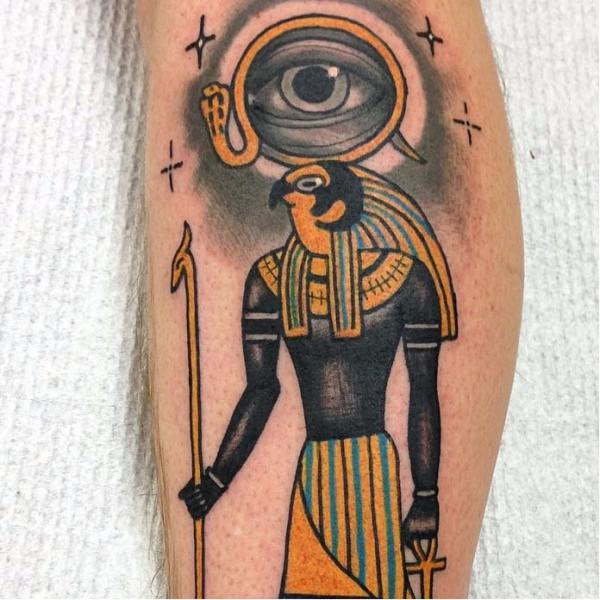
Egyptian God Anubis Tattoo– The Jackal of the Afterlife
Anubis, the jackal-headed god, stands sentinel at the threshold of the afterlife. As the protector of graves and conductor of souls, he is a figure that commands respect. A tattoo of Anubis is often sought by those who see themselves as protectors, or who wish to honor the journey of life and death.
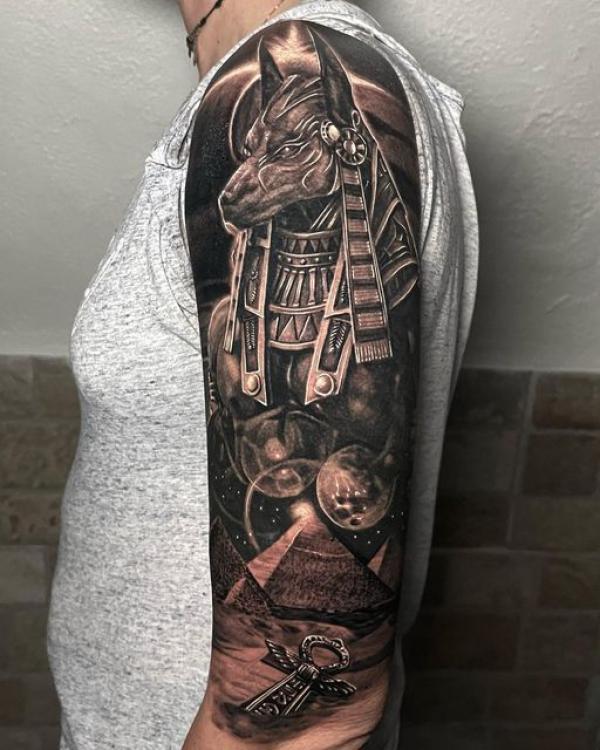
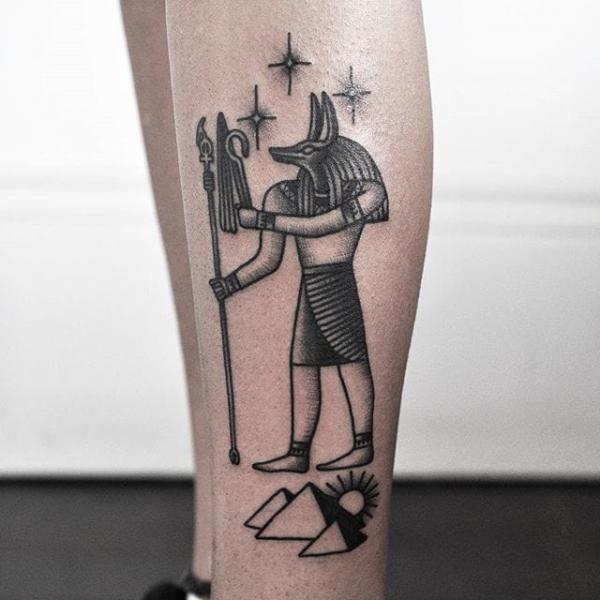
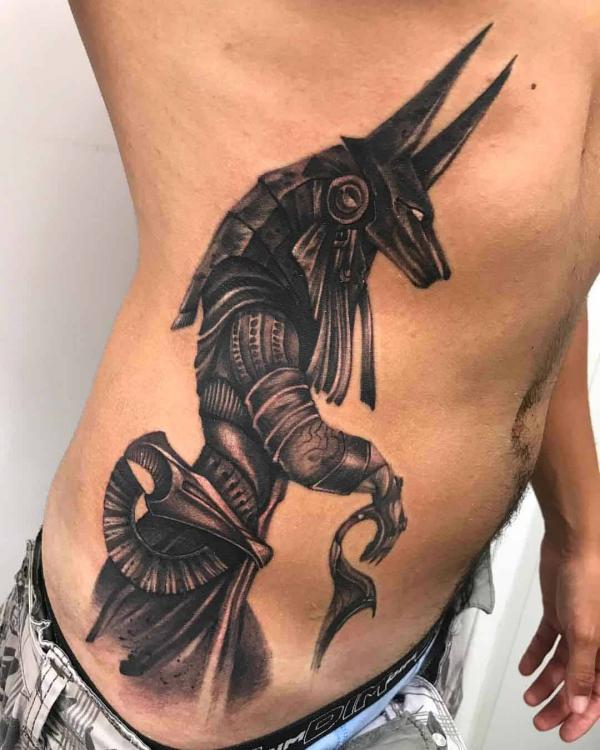
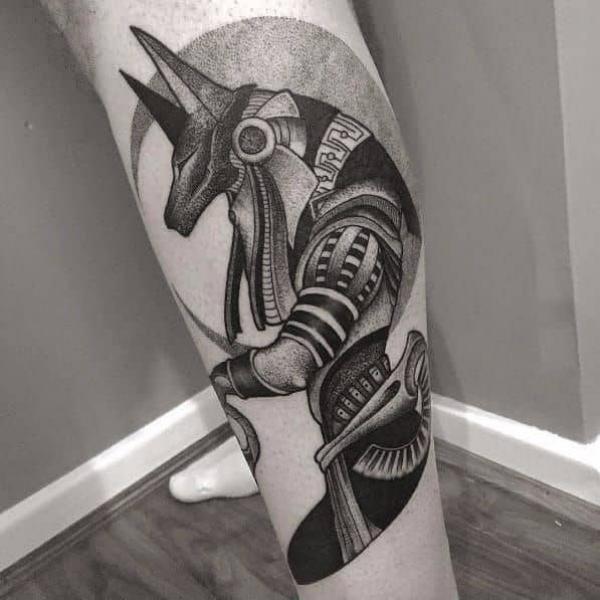
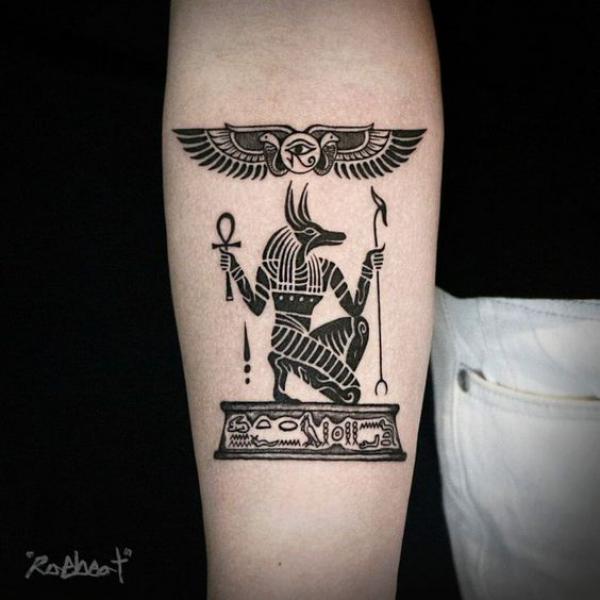
Egyptian God Thoth Tattoo – The Scribe of the Gods
Thoth, depicted with the head of an ibis, is the arbitrator of divine intellect—god of wisdom, scribes, and the written word. His image inked in skin speaks to a quest for knowledge, a life of balance, and the pursuit of truth. For the literary and the learned, a Thoth tattoo symbolizes a dedication to understanding the universe’s vast mysteries.
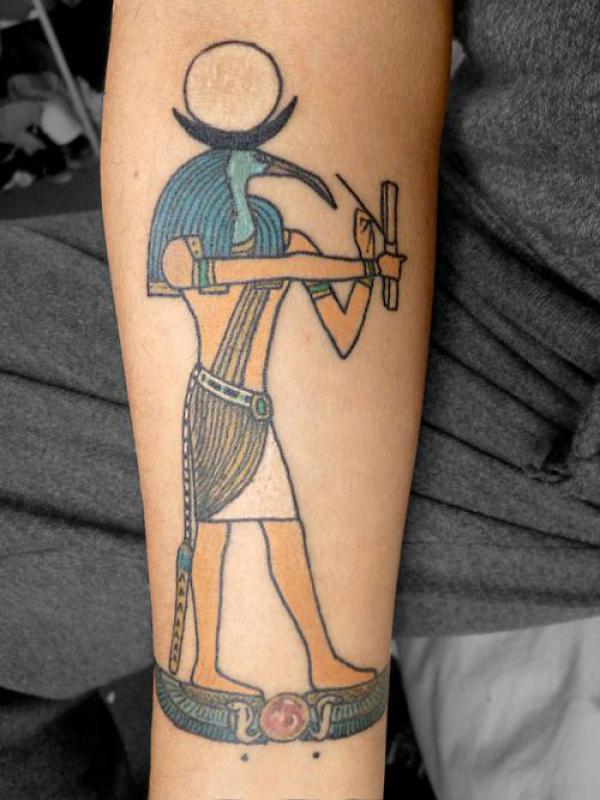
Egyptian Goddess Bastet Tattoo – The Feline of Harmony
Bastet, the cat goddess, embodies the home’s warmth, the ripeness of the harvest, and the protective embrace. She is both a nurturing presence and a fierce combatant when provoked. Tattoos of Bastet celebrate the dual nature of nurturing and independence, making a perfect emblem for those who find strength in grace and domestic harmony.
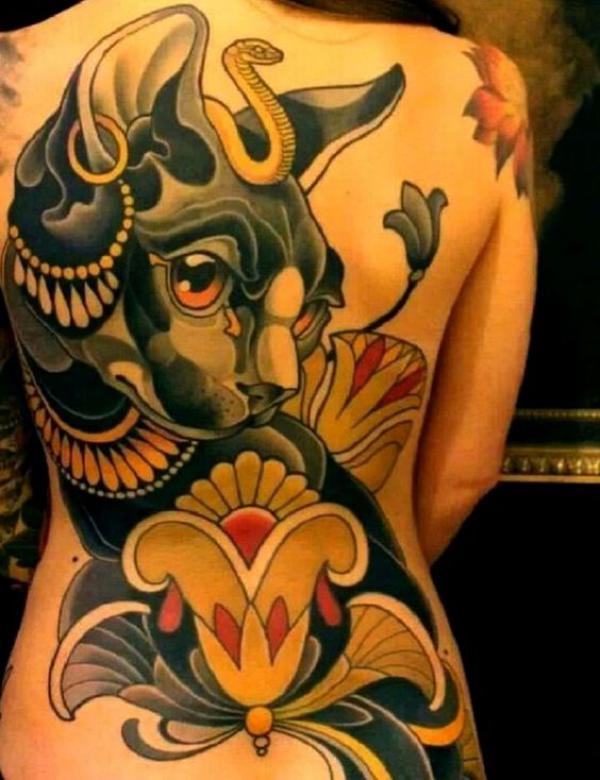
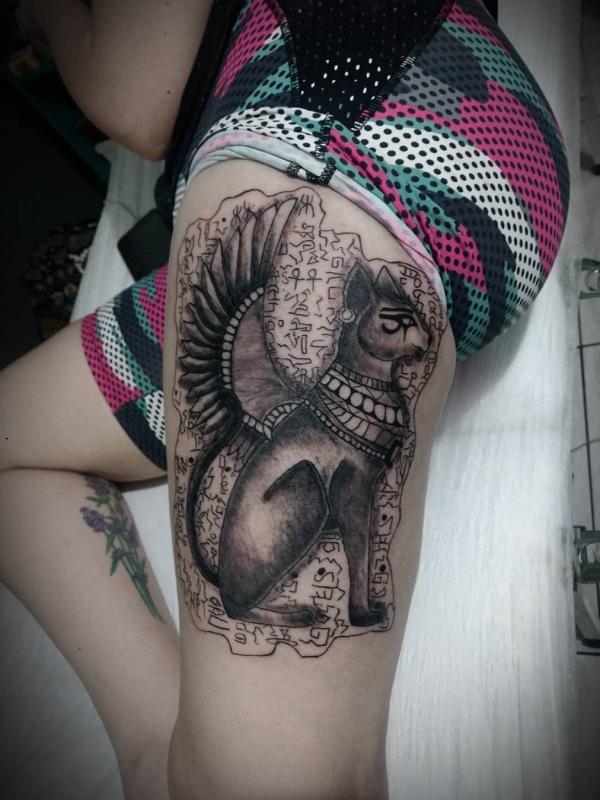
Sekhmet – The Lioness of Power
Sekhmet, with her lioness head, is a complex figure of destruction turned to healing. She represents the ferocity of warfare and the restorative power of medicine. A symbol of resilience and transformation, Sekhmet tattoos resonate with those who have overcome great adversity or work to heal others.
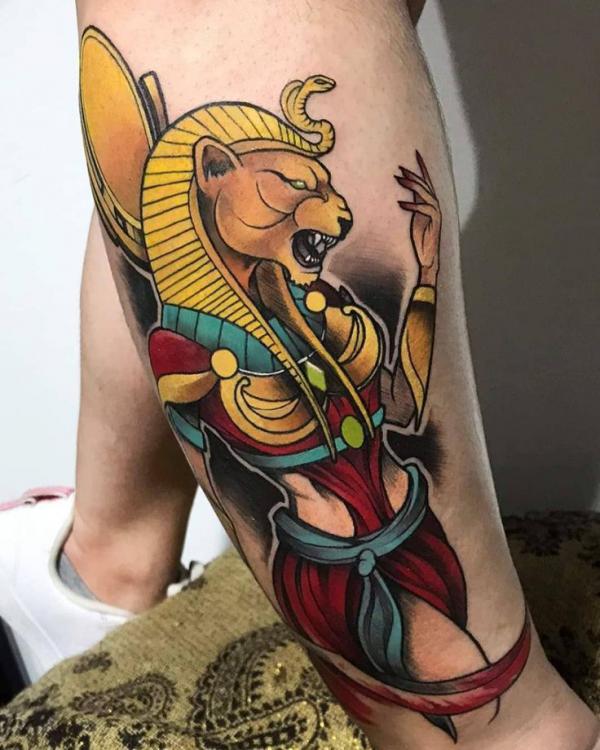
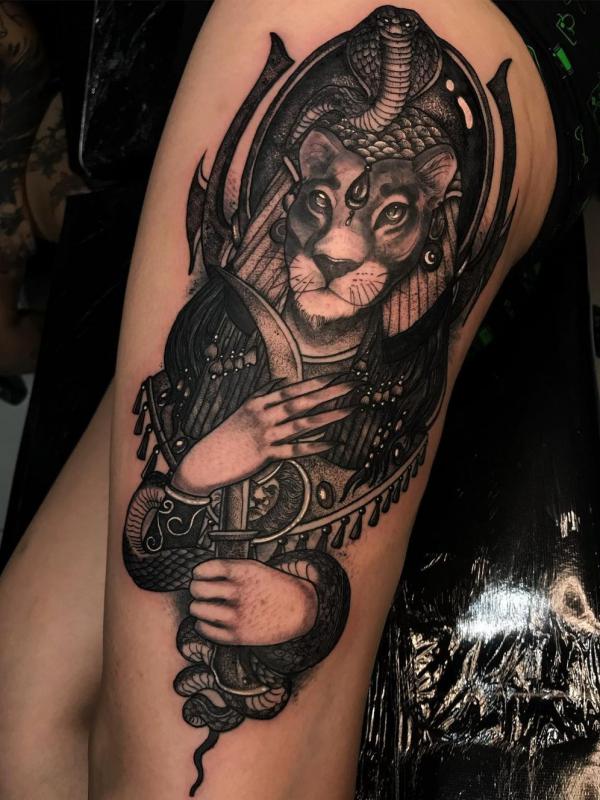
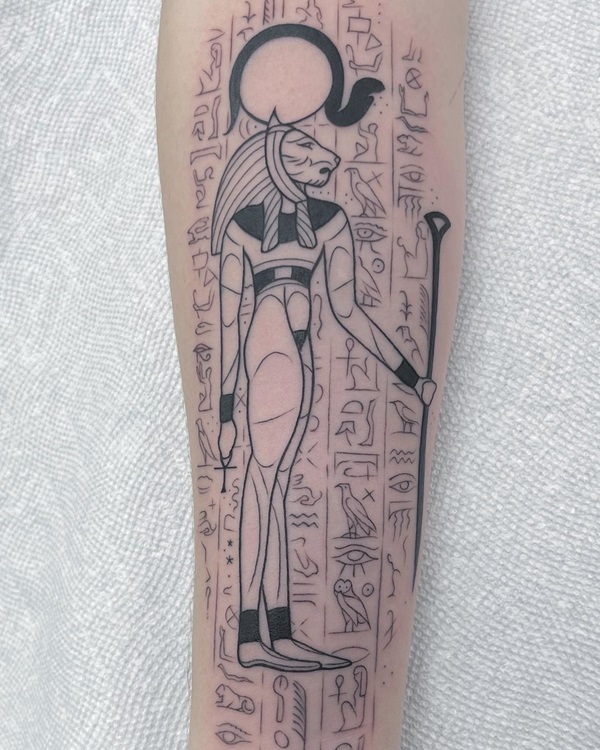
Egyptian Goddess Hathor Tattoo – The Dancer in the Sky
Hathor, the cow goddess, is the epitome of love, music, and the arts, symbolizing the joys of life. Her tattoos sing a song of life’s beauty, the heart’s passions, and the body’s rhythmic movements. For those who find solace in art or the beat of the drum, Hathor is a guiding spirit drawn onto the skin.
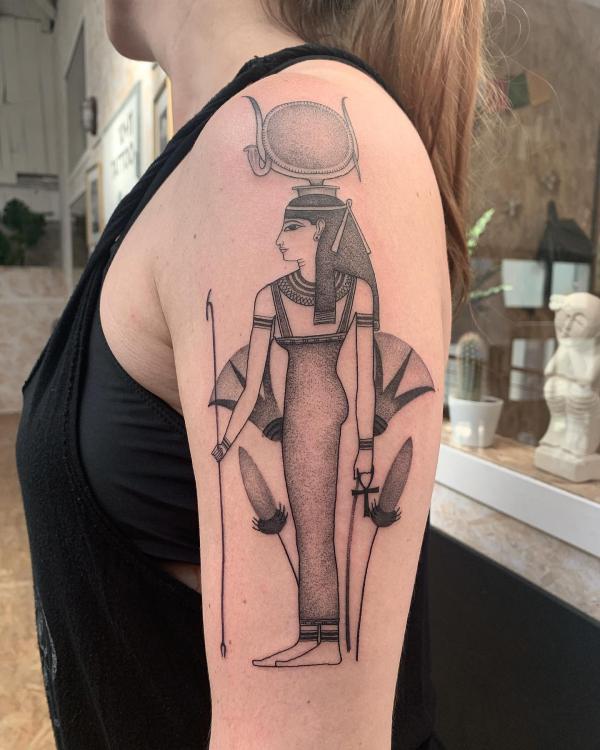
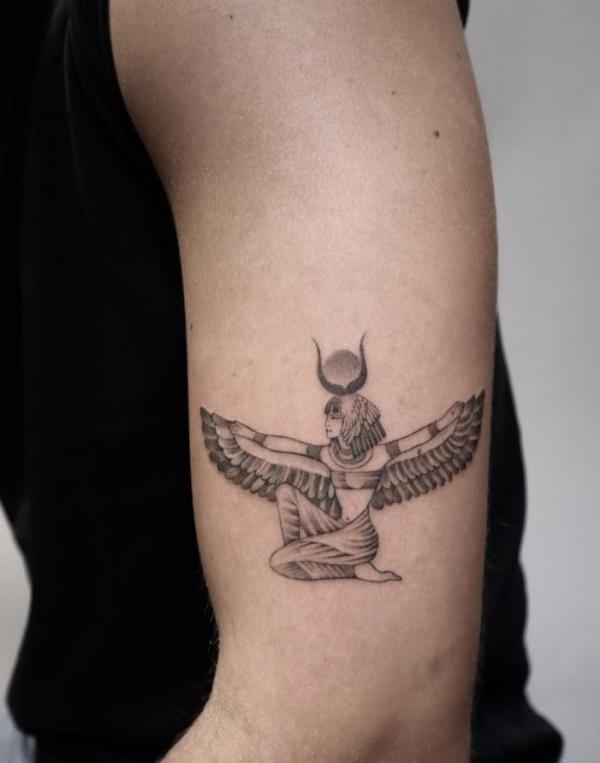
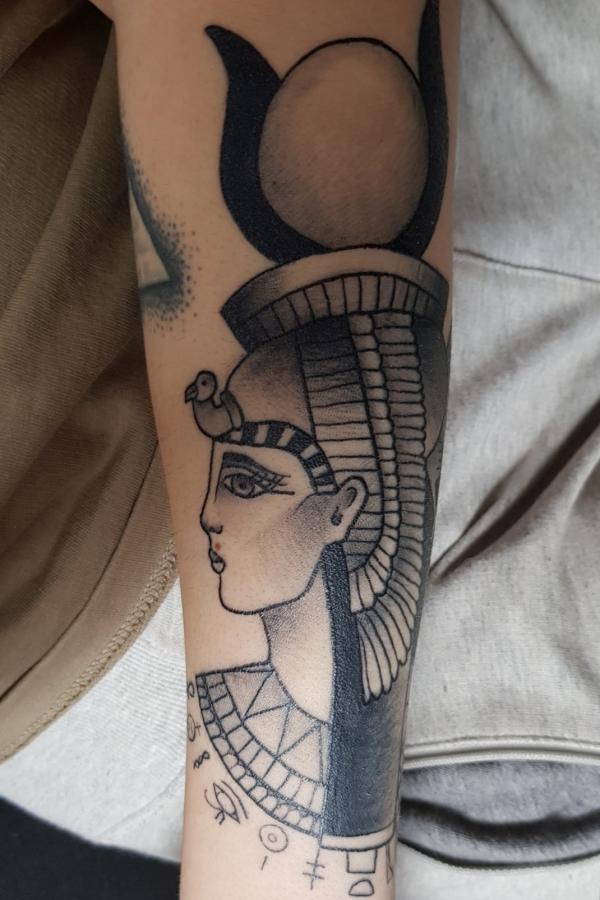
Sobek – The Protector of the Nile
Sobek, the crocodile god, was revered as the powerful guardian of the Nile, which was both the lifeblood of Egypt and a source of constant danger. His image, when inked into the skin, invokes the primal energies of fertility, strength, and protection.
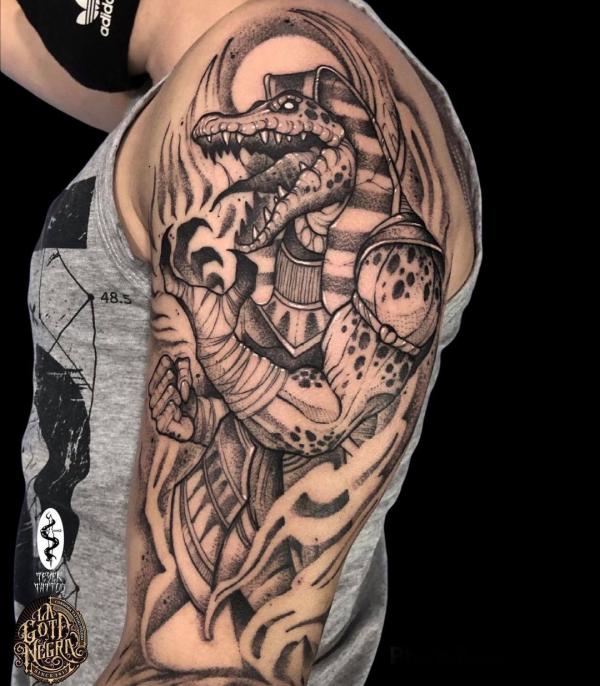
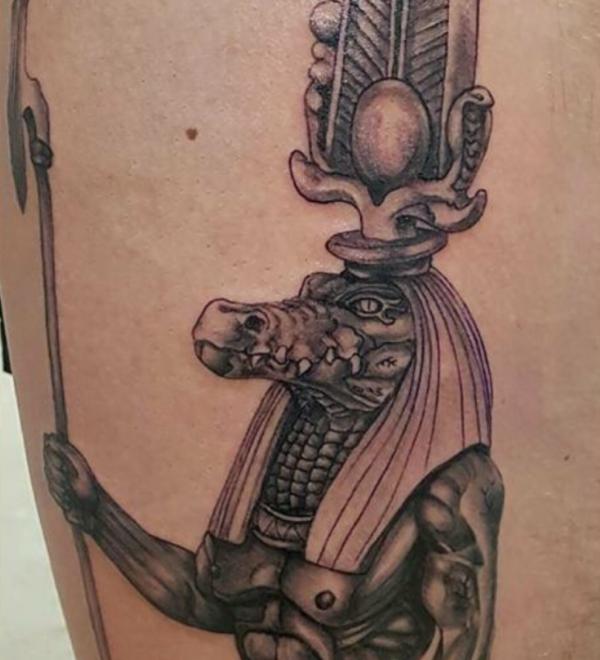
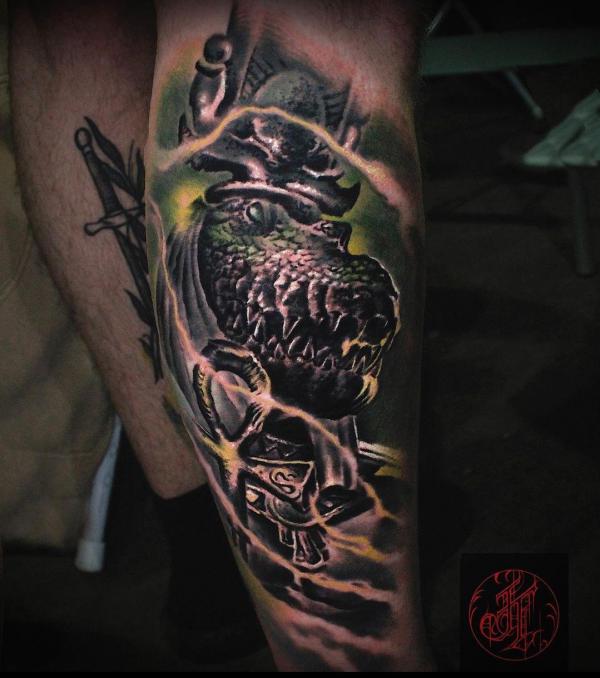
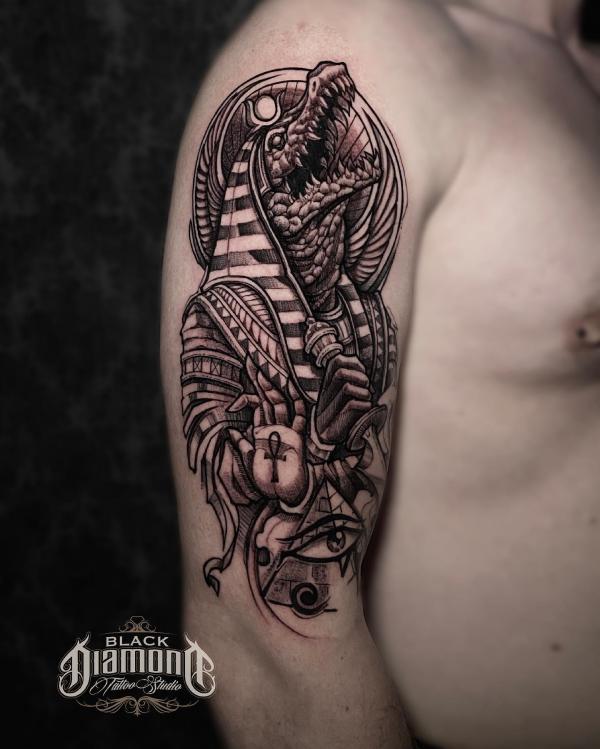
Egyptian God Seth Tattoo – The Force of the Storm
Seth, god of deserts, storms, and chaos, might seem an unusual choice for a tattoo, but he represents the necessary force of change. A Seth tattoo can signify a respect for the power of nature or a recognition of the chaos that can lead to transformation.
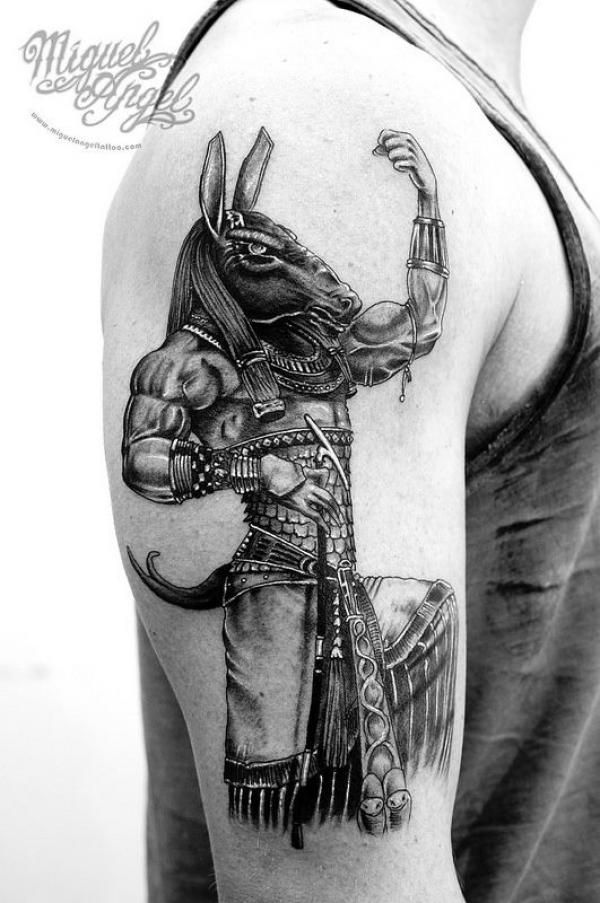
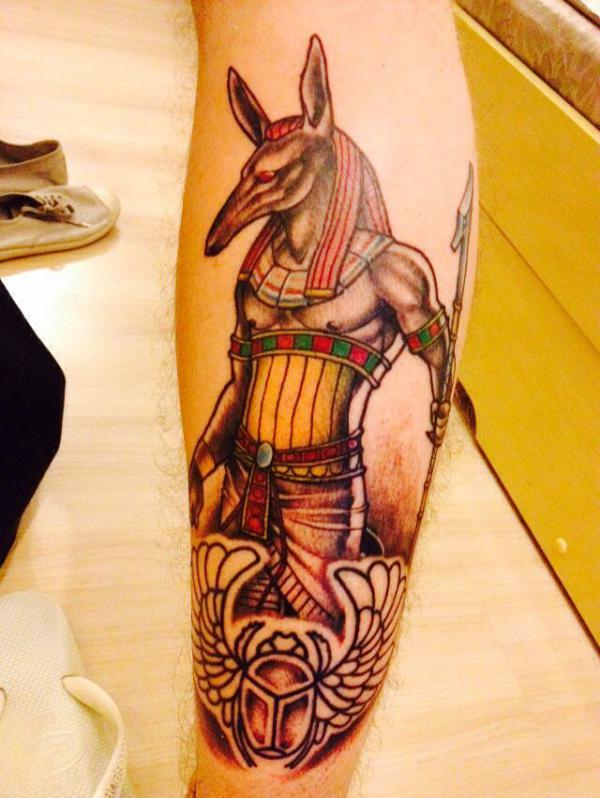
Ma’at – The Feather of Truth
Ma’at, the goddess who personifies truth and cosmic order, is often symbolized by an ostrich feather. Tattoos featuring Ma’at or her feather signify a commitment to truth, justice, and the natural order of the universe.
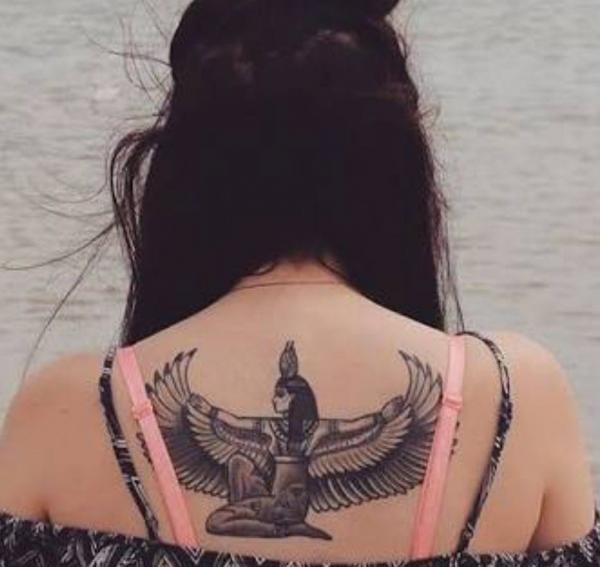
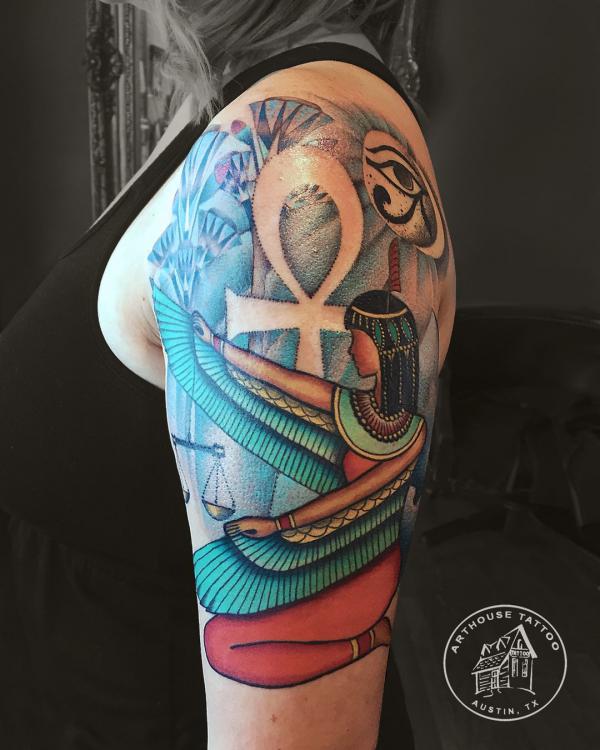
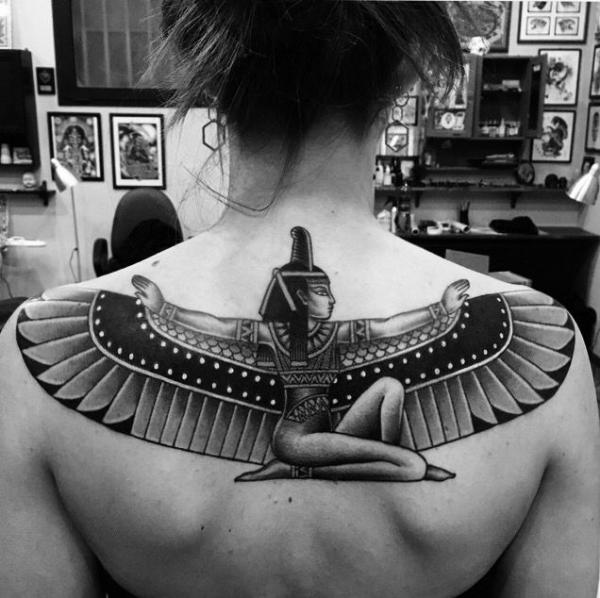
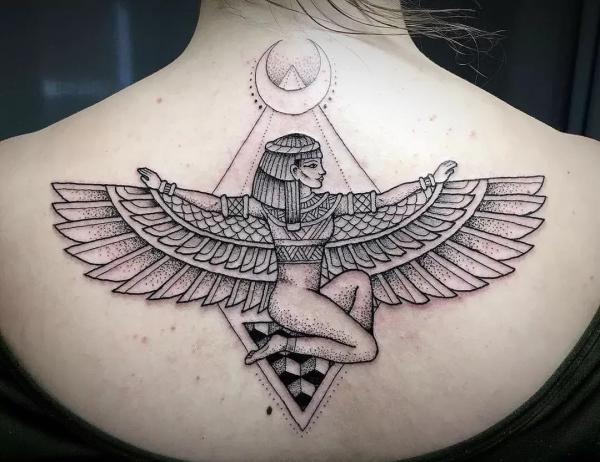
Khnum – The Divine Potter
Khnum, depicted as a ram-headed god, is a creator deity associated with the annual flooding of the Nile. Tattoos of Khnum can be seen as a homage to creation, craftsmanship, and the cycles of renewal.
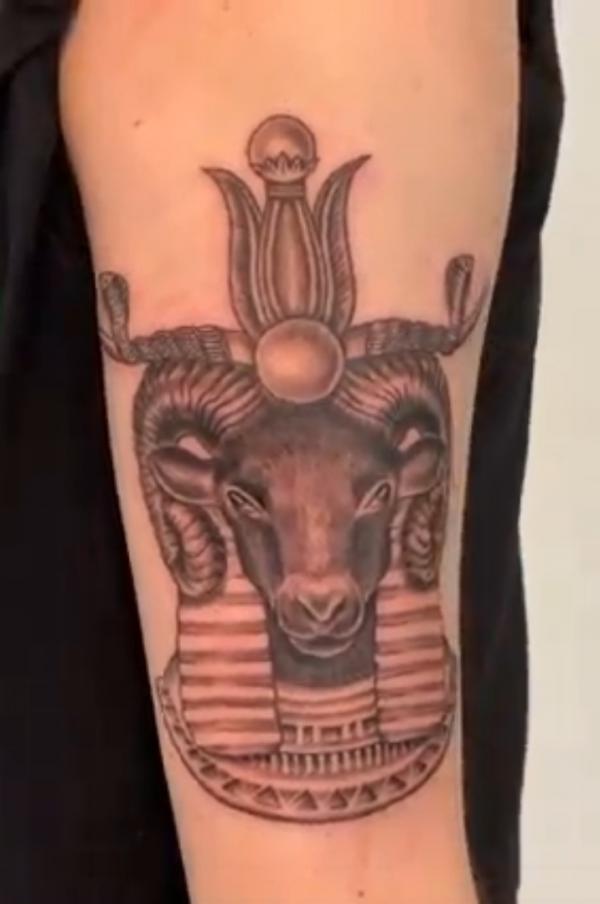
Symbolism and Meaning Of Egyptian God Tattoos
Each Egyptian deity carries a universe of symbolism. Ra’s association with the sun speaks to vitality and creativity. Osiris’s link to the afterlife underscores themes of transition and transformation. Isis symbolizes the protective and nurturing aspects of life, while Horus embodies the idea of watchfulness and strength.
Anubis’s association with mummification links him to themes of protection and transition. Thoth, with his vast knowledge, symbolizes the pursuit of wisdom. Bastet’s gentle fertility contrasts with her protective ferocity, while Sekhmet’s power to destroy and heal speaks to the dual nature of life. Hathor’s joyous dance through the cosmos is a reminder to cherish love and beauty.
Sobek’s vigor, Hathor’s passion, Bastet’s protective nature, Seth’s disruptive might, Ma’at’s unwavering balance, and Khnum’s creative force—each represents different facets of life and the human spirit.
In tattoo form, these Egyptian Gods become personal talismans, embodying the qualities that we aspire to or recognize within ourselves. They are not just decorative but are imbued with meanings that offer strength, comfort, and inspiration.
Popular Egyptian God Tattoo Designs and Variations
The designs and variations of Egyptian god tattoos are as diverse as the deities themselves. From the full-bodied depiction of Anubis, the jackal-headed god of mummification, to the intricate Eye of Horus, each design is rich with detail and symbolic meaning.
Incorporating hieroglyphs, pyramids, and other Egyptian motifs into the designs adds layers of history and depth. Color, too, plays a crucial role. The radiant golds and deep blues prevalent in these tattoos echo the lavishness of ancient royal burial chambers. They also evoke the cherished lapis lazili, a gemstone treasured by the skilled artisans of antiquity.
Cultural Sensitivity and Respect
As with any cultural symbol, it’s vital to approach Egyptian god tattoos with sensitivity and respect. Understanding the stories and significance behind these ancient icons is crucial. It’s not just about aesthetics; it’s about honoring a rich cultural heritage.
Avoiding cultural appropriation means engaging with these symbols mindfully. It’s essential to recognize their origin and to approach them with the reverence they deserve. Tattoos of Egyptian gods should be more than decoration; they should be a respectful nod to the past, an acknowledgment of a civilization that has shaped human history.
Conclusion
The allure of Egyptian god tattoos lies in their timeless appeal. They offer a connection to the ancient world, to stories and legends that have withstood the test of time. These tattoos are more than just art; they’re personal emblems of the qualities we admire, the mysteries we ponder, and the history we respect.
When choosing an Egyptian god tattoo, consider the deep meaning behind the symbol. Let it be a guide, a protector, or an inspiration. Let it reflect your journey, your values, and your respect for the ancient world. After all, thesesymbols are more than ink and skin; they’re a conversation with history, a dance with divinity, and a testament to the enduring human spirit that first dreamt of gods beneath the Egyptian sun.

